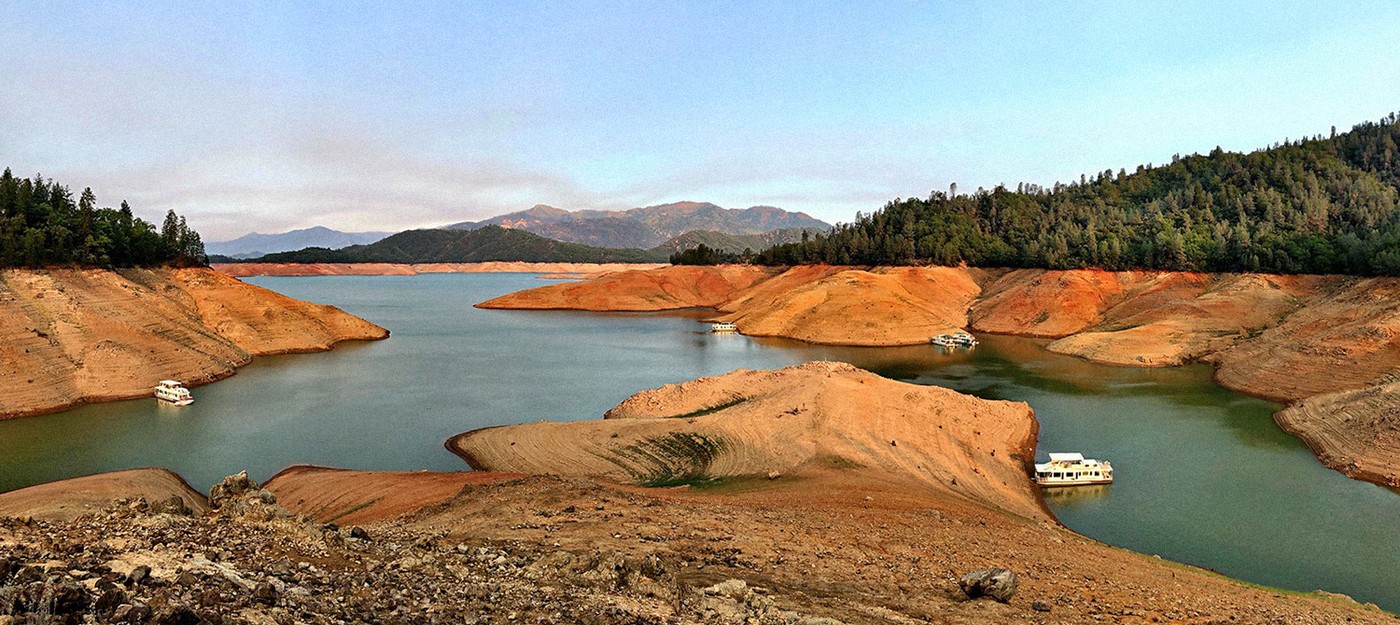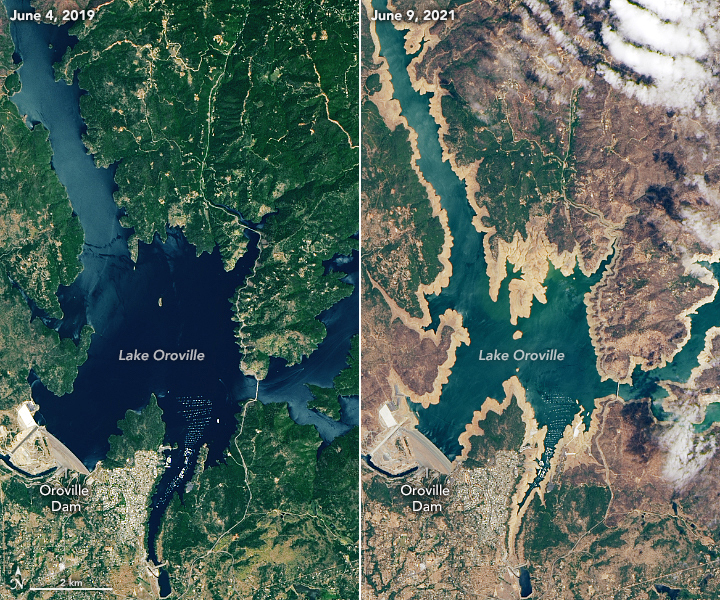Historic low levels at the two largest water reservoirs in California

Usually in early May, as snow melts, water reservoirs in California reaching the highest levels of the year. This time prolonged droughts and low precipitation caused critically low capacity, promising serious issues during the upcoming summer.
National Drought Summary indicates that Lake Oroville is currently at 55% of its total capacity. Shasta Lake even worse — at about 40% of its usual level in early May, in this case it is the lowest since the beginning of record-keeping in the late 70's.
The latest report by U.S. Drought Monitor states that "in California, the state’s two largest reservoirs are at critically low levels moving into the dry season." Such conditions, combined with snow water equivalent at just 37 percent of the long-term average, forced Metropolitan Water District of Southern California to implement water conservation measures, which includes the limit for outdoor watering to one day per week.

It is clear as ever that California and other Western States are up for the driest years in recorded history, as Lake Mead and Lake Powell hitting historic lows. And along with the water supply shortages, Shasta and Powell Dams generate less power, which means residents will pay more for it.
For the next months there will be limited opportunities to increase reservoir levels, as California State Climatologist Mike Anderson said in a hydrology update:
Statewide reservoir storage has increased at a slower pace than normal so far this year due to the limited storms and associated runoff. Streamflow and groundwater are also both well below average across much of the state. ... As May continues, the flows will drop off rapidly.
While historic megadrought continue more reservoirs and waterways are likely to reach the lowest levels.




